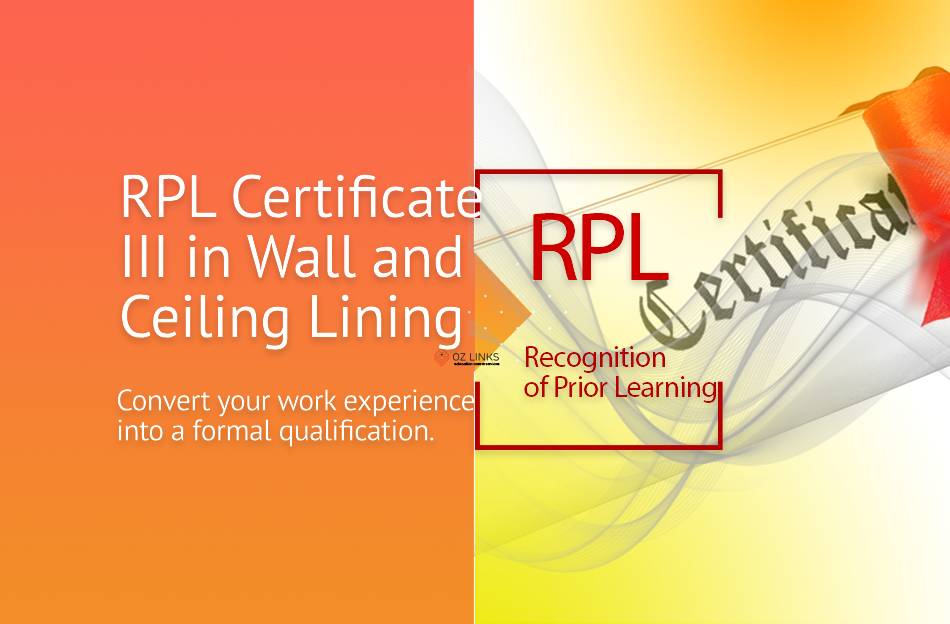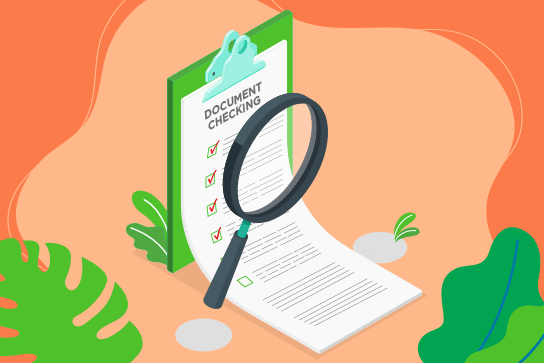Last Updated on May 14, 2025 by Ozlinks Education
If you have been employed as a fibrous plasterer but have not yet attained your qualification for any reason, you’re come to the right place. The RPL Recognition of Prior Learning program is a way to convert your skills and work experience into a formal Certificate III in Wall and Ceiling Lining from one of our Registered Training Organisation partners.
Let’s get your skills certified!
Certificate III in Wall and Ceiling Lining Overview
The CPC31220 Certificate III in Wall and Ceiling Lining is designed for individuals seeking comprehensive training in the wall and ceiling lining industry. It incorporates a variety of practical and theoretical aspects of the trade applicable to both residential and commercial construction work. The qualification includes core units of competency that address common skills required in the construction industry, along with specialised knowledge pertinent to wall and ceiling liners. You may want to consider obtaining this certificate, as it represents one of the essential trade qualifications needed when applying for a position in the building and construction sector.
To achieve this qualification, competency must be demonstrated in:
29 units of competency must be completed:
- 22 core units
- 7 elective units
Job titles: Wall and ceiling liner, Drywaller, Plasterer
Why do I need the Certificate III in Wall and Ceiling Lining?
If you have been working as a wall and ceiling installer or plasterer in the residential or commercial building industry but have not yet obtained your qualification for any reason, pursuing an RPL program for this certification can help you excel in the building and construction sector. It will also assist you in preparing for the requirements of becoming a certified trade worker, enabling professionals to legally undertake residential, commercial, and industrial building and construction projects throughout Australia.
International students and migrants who have been working as plasterers specialising in wall and ceiling work in Australia and wish to apply for skills assessment under the general skills migration (GSM) program need to obtain the Certificate III in Wall and Ceiling Lining to meet one of the qualification requirements for their migration skill assessment purposes.
Ozlinks Education can assist you in transforming your skills and work experience into a formal Certificate III in Wall and Ceiling Lining through the Recognition of Prior Learning (RPL) program with one of our Registered Training Organisation partners. Our expert team will assess your individual circumstances and provide tailored support to ensure that you achieve the qualifications necessary to advance your career.

What does a fibrous plasterer do?
A fibrous plasterer applies and fixes plasterboard partitions, suspended ceilings, fire rating systems, acoustic tiles, and composite wall linings to buildings. Registration or licensing may be required.
Their job involves:
- determining plasterboard layout, and installing insulation and vapor barriers
- measuring, marking and cutting plasterboard, lifting and positioning panels, and securing them to walls, ceilings and battens
- preparing corner beads and securing them in position
- fixing pre-cast cornices, panel moldings, ceiling centers and other plaster fittings
- covering joints and nail holes with wet plaster and sealing compounds, and smoothing them using wet brushes and sandpaper
- mixing and applying coats of plaster, cement and render to structures using trowels, and levelling and smoothing coats to uniform thickness
- plumbing and straightening corners, angles and wall and ceiling surfaces
- creating decorative textures in finishing coats
- applying and finishing acoustic, insulating and fireproofing materials bonded with plaster, plastic cement and similar materials
What is Recognition of Prior Learning?
The Australian Qualification Framework (AQF), which is governed by the Australian Government’s Department of Education in consultation with the states and territories, gives all students the right to have their prior education, relevant work experience, and training acknowledged to facilitate their advancement towards and between qualifications. Every registered training organisation (RTO) has its own policies and procedures for determining your RPL eligibility, but the fundamentals are the same. The experience and skills you’ve gained through your work can help you complete a qualification faster and reduce the time commitment of taking a course to get you closer to your dream job.
The advantages of using RPL program
Recognition of Prior Learning (RPL) program offer numerous benefits, including time and cost savings by validating existing skills and experience, expedited qualification achievement, and improved employment prospects. RPL program helps you:
- There is no need to relearn what you already know.
- It saves both your time and tuition fees.
- Assist you in achieving your career change objectives in Australia.
- Gaining an Australian qualification requires less time.
- You do not need to attend classes or redo the training you have already completed.
- Open new career opportunities in the building industry.
- Assist you in obtaining a qualification that satisfies the visa or skills assessment requirement.
Evidence requirements
Below is the general list of documents that you are required to provide to support your RPL assessment application:
- 100 points of identification documents (ID)
- A current resume outlines your relevant employment history
- Student USI number
- A white card or any other relevant license
- Employment evidence, including an employment reference letter, employment contract, payslips, income statement, and superannuation.
- Workplace photos and videos that showcase you performing your tasks in accordance with the job duties outlined above demonstrate your competency in the relevant qualification.
Note: Additional gap training may be necessary to address any areas for improvement and to ensure a positive assessment outcome. An RTO assessor might conduct a competency interview with you to identify any existing training gaps.



